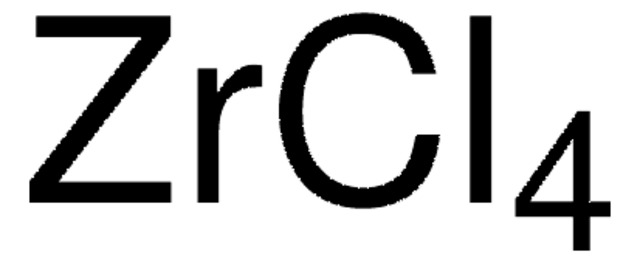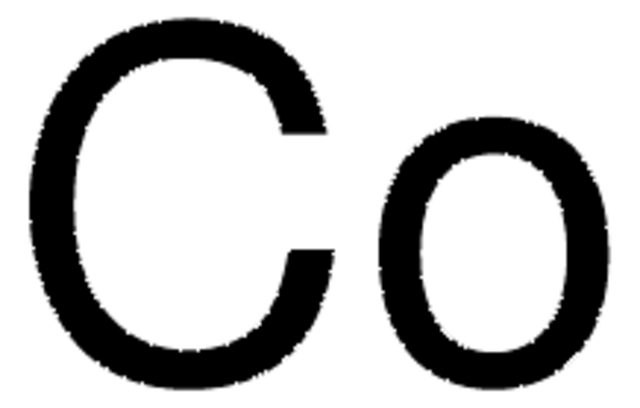267651
Zirconium
sponge, ≥99% trace metals basis
Sinónimos:
Zirconium element
About This Item
Productos recomendados
Nivel de calidad
Ensayo
≥99% trace metals basis
Formulario
sponge
resistividad
40 μΩ-cm, 20°C
bp
4377 °C (lit.)
mp
1852 °C (lit.)
densidad
6.5 g/mL at 25 °C (lit.)
cadena SMILES
[Zr]
InChI
1S/Zr
Clave InChI
QCWXUUIWCKQGHC-UHFFFAOYSA-N
¿Está buscando productos similares? Visita Guía de comparación de productos
Categorías relacionadas
Aplicación
Palabra de señalización
Danger
Frases de peligro
Consejos de prudencia
Clasificaciones de peligro
Pyr. Sol. 1 - Water-react 1
Riesgos supl.
Código de clase de almacenamiento
4.2 - Pyrophoric and self-heating hazardous materials
Clase de riesgo para el agua (WGK)
WGK 1
Punto de inflamabilidad (°F)
Not applicable
Punto de inflamabilidad (°C)
Not applicable
Equipo de protección personal
Eyeshields, Faceshields, Gloves, type P3 (EN 143) respirator cartridges
Elija entre una de las versiones más recientes:
¿Ya tiene este producto?
Encuentre la documentación para los productos que ha comprado recientemente en la Biblioteca de documentos.
Los clientes también vieron
Artículos
Biomedical implants are essentially foreign substances within the human body that must survive many years’ exposure to demanding mechanical and physiological conditions. Despite these challenges, metal implants have been widely used to substitute for or rebuild hard tissues such as bones and teeth.
Nuestro equipo de científicos tiene experiencia en todas las áreas de investigación: Ciencias de la vida, Ciencia de los materiales, Síntesis química, Cromatografía, Analítica y muchas otras.
Póngase en contacto con el Servicio técnico








